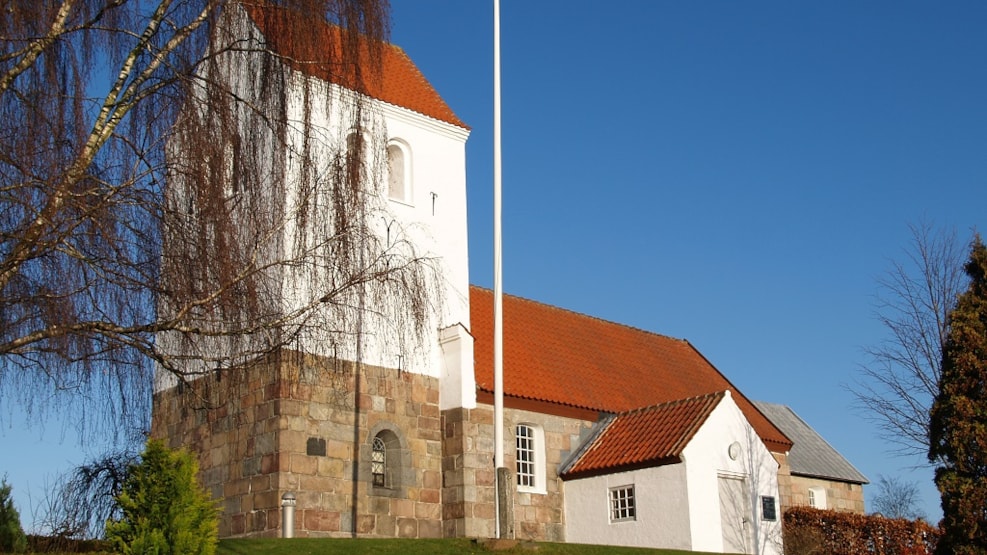
Hørby Church
Hørby Church, dating back to around 1200, is constructed with solid ashlar stones on a sloping base. It comprises a Romanesque choir and nave, a Late Gothic tower (15th century), and a porch from the 19th century. During the latest restoration in 1981/82, National Museum employees sought traces of an older timber church. They uncovered post holes from the church's construction and pits that were evidently older than the stone church, indicating previous activity at the site before the church was built.
The altarpiece was created by the painter Rudolf Rud-Petersen during a major restoration of the church in 1950. Rudolf Rud-Petersen was a student of Zartmann and a longtime collaborator with Joakim Skovgaard. The altarpiece is a genuine evangelical, unsentimental artwork inspired by the Christmas story in Luke 2:1-20, depicting the birth of Christ and the shepherds' worship.
Hørby Church boasts a beautiful and richly decorated altar chalice. During Skipper Klements' feud in 1534, it seems the altar silver had been stolen. Ove Lunge, the captain of Aalborghus, who besides owning Odden estate in Vendsyssel also possessed Hørby Church, deemed it too frugal to have only a lead chalice and therefore funded a new one made of silver.
The pulpit is a fine piece of carpentry from around 1625 with its 'Ionic' corner pillars, arcade panels, angels, and lions. The baptismal font is a very beautiful and powerful stonemasonry work from the Romanesque period when baptism occurred by immersion. At the base, you can see the drainage hole where the water was directed into the consecrated earth beneath the church. On the sides are depicted a pair of distinctive double lions: two bodies sharing one head with an unusually long tongue.